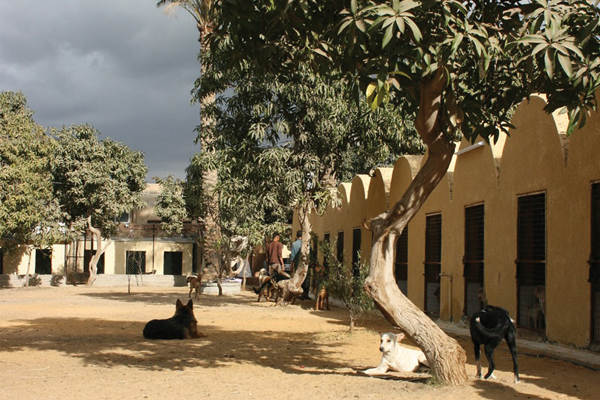Rescue Work in Egypt
by Kristen Stilt | Nov 01, 2008
American news often focuses on the Middle East, and the reports are usually bad—war, political and religious extremism, and authoritarian regimes feature prominently in our media. A story of hope, compassion, and courage comes from the Egyptian Society for Mercy to Animals (ESMA), located in Cairo, Egypt, and offers a chance for Chicagoans to directly support these Egyptians working to help animals in almost impossible circumstances.

Unlike in America, Cairo’s animal welfare issues are forced into the public eye at every turn. Images of dogs and cats living and dying on the streets in huge numbers, and malnourished horses and donkeys pulling excessively heavy carts confront tourists and residents every day. Despite a long history of attention to animal welfare in Islamic law, modern Egypt has failed to care properly for its animal citizens. The Egyptian government’s idea of animal population control consists of poisoning and shooting homeless dogs and cats.
United by a sense of outrage about the situation, and a passion to make a difference, a group of Egyptians formed The Egyptian Society for Mercy to Animals (ESMA).
Headquartered in Cairo, ESMA currently provides a home to 179 dogs and 123 cats, and focuses on emergency rescue cases, rehabilitation, and adoption. ESMA Vice President Mona Khalil, who runs the dayto-day operations at the shelter (in addition to her full time job as a broadcast journalist) says that, “education is the key to the future of animal welfare in Egypt. Ignorance produces this cruelty that we see on a daily basis; ignorance about the many ways in which even a poor society can do much better for its animals.”
ESMA teaches proper animal care and compassion.“We have made huge progress within the semi-rural community in which our shelter is located,” Khalil explains, “because we provide the only source of care people have for their animals.” ESMA provides animals in need with free spaying and neutering, as well as free medical care.
With animal welfare a new field in Egypt, ESMA faces challenges that range from a lack of veterinarian medical supplies to difficulty finding employees to work at the shelter. Graduates of veterinary school have never worked with cats and dogs, since vet schools focus mainly on animals for consumption. ESMA has begun offering vet students internships that provide them with hands-on experience with companion animals, generating interest in this new field of vet care. “Vet students can face ridicule from their families and peers for wanting to work with dogs and cats,” Khalil explains, “We have to help them understand that their work is essential and honorable.” ESMA hopes to be able to send its vets for short training courses in the U.S. in the future.
Misunderstandings of religion also challenge ESMA in its work. Under some interpretations of Islam, dogs are considered ritually impure, and handlers are required to wash the part of the body or clothing that has been in contact with the dog before prayer. Unfortunately, many Egyptians take this purity issue and its accompanying rules to the extreme, harming dogs on the street despite its reprehensibility in Islamic law. ESMA has helped to produce a primer on Islamic law and animal welfare, which will be widely distributed this fall. ESMA has undertaken a capital campaign to raise the funds to buy land to construct its permanent shelter and medical center. Currently it operates on rented land, and so is limited to the existing infrastructure. Visit www.esmaegypt.org to find out more information about how you can help.
From Reverence to Revulsion
The plight of Egyptian cats wasn’t always bleak. In ancient Egypt, cats were not only revered, they were worshipped and fiercely protected. The Egyptian god, Bast, “the protector” was depicted in the form of a wild cat. Cats in Egypt were placed in high standing, not only for their job of protecting crops and killing vermin and snakes, but for the spiritual mystique that surrounded them. In exchange for their protection, the cats lived lavish lives, often eating at human tables, and sleeping in human beds. Citizens went out of their way to protect cats, and it became a capital crime to harm or kill a cat, whether intentional or accidental.
Statues were created to honor them, with amulets used for their eyes, which were looked upon as “all seeing, protective and all knowing”. When cats died, they were often mummified to allow their spirits to unite with their earthly bodies. Today, tombs of Egyptian leaders and royalty are still discovered with mummified cats inside.
As time passed the image of Bast softened and the feline god came to represent fertility and beauty. Bast statues were created showing the cat surrounded by kittens, and women began imitating the feline look of almond-shaped eyes that turned up at the edges.
The worship of cats ended sometime in 390 AD, when the worship of Bast was banned.
